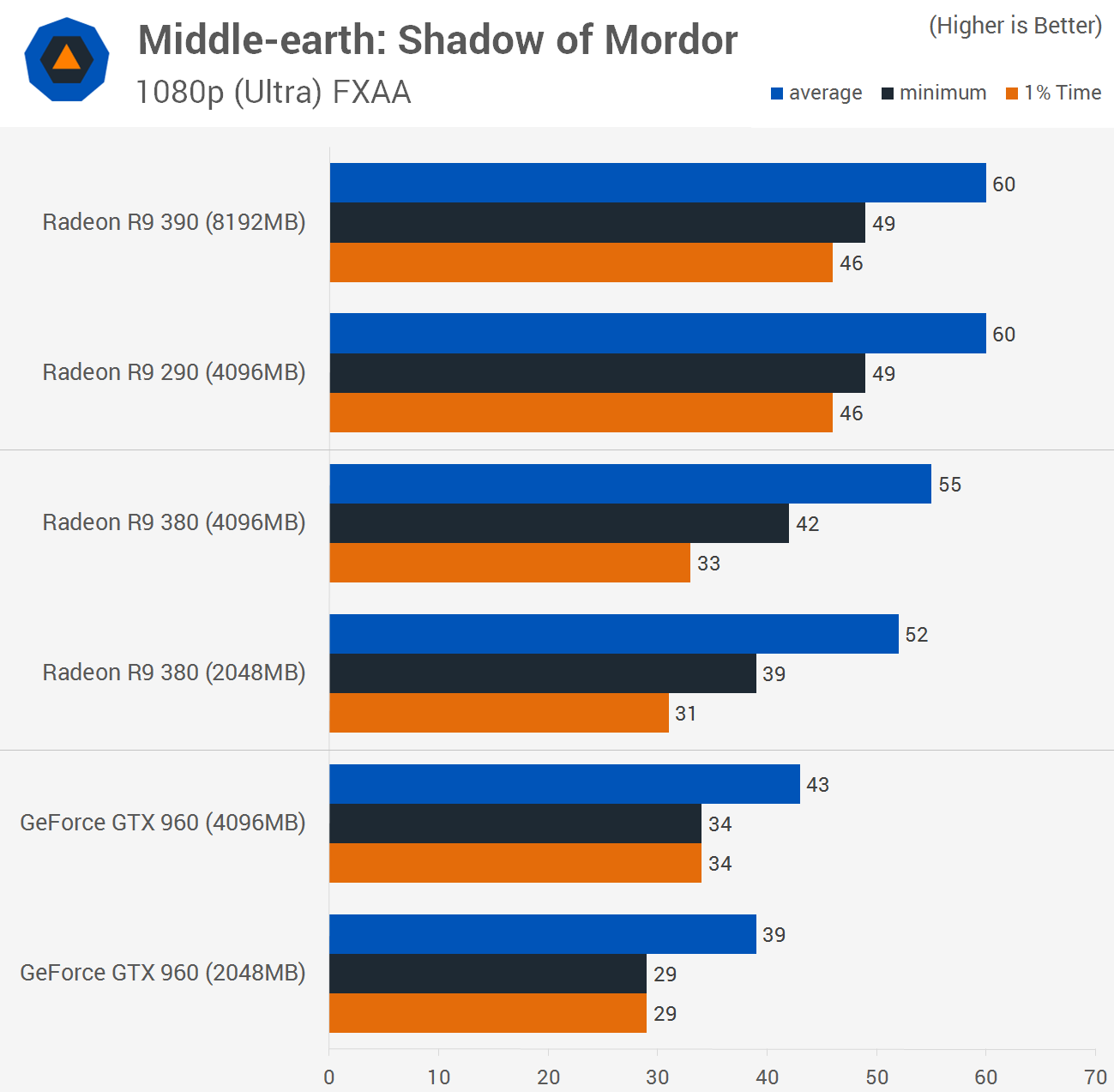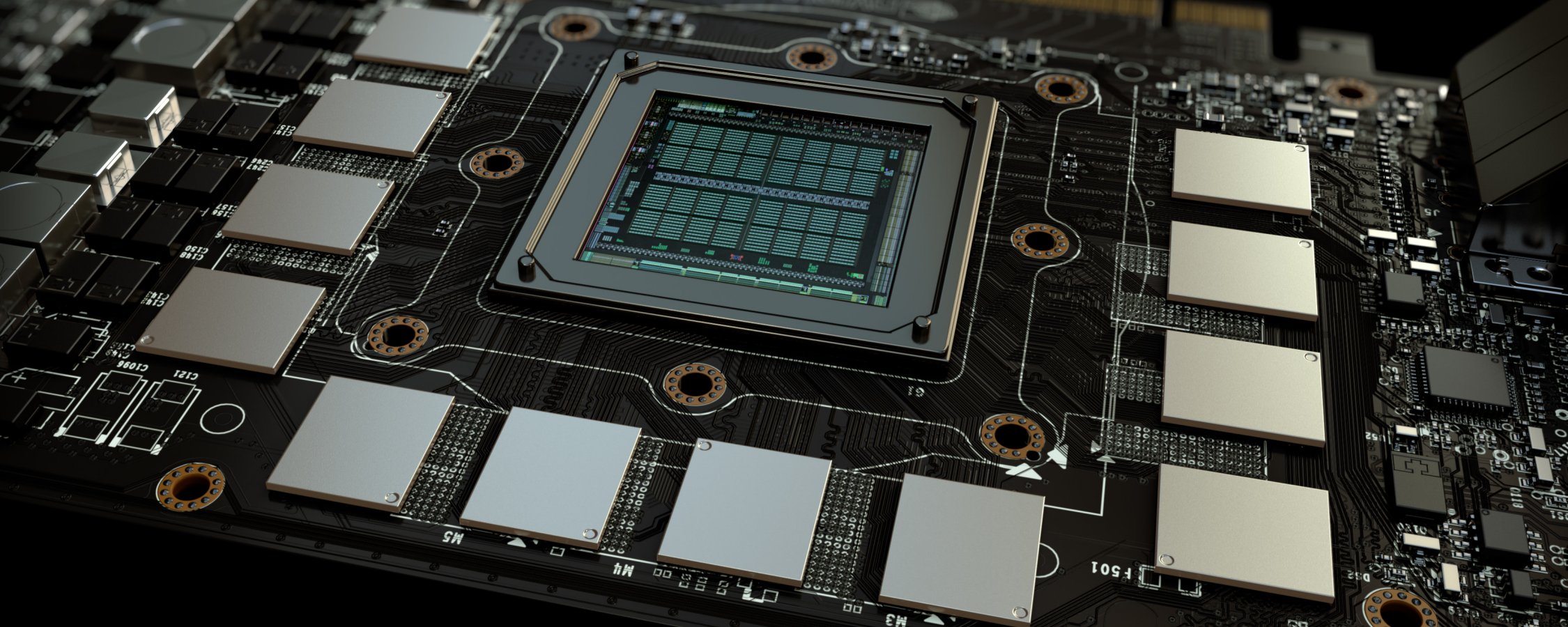Benchmarks: Rainbow Six Siege, Shadow of Mordor, Dragon Age: Inquisition

Rainbow Six Siege was recently updated with a high resolution textures pack which claims to require a 6GB frame buffer at 1080p. This is an extreme requirement so we added the game to our battery of tests.
As you can see using the ultra-quality settings, which enables the high resolution textures, the Radeon R9 390 is for the first time faster than the R9 290, if only slightly. A much bigger performance margin can be seen when comparing the 4GB 380 to the 2GB model, the larger VRAM capacity allowed for 23% more performance when comparing the average frame rate.
The GeForce GTX 960 was also 16% faster when fitted with 4GBs of GDDR5 memory with an average of 59fps.

These are by far the most significant results we have seen for the 380 and 960 graphics cards. The 4GB 380 played considerably better at 2560x1600 with an average of 43fps opposed to 34fps for the 2GB model. The GTX 960 also went from just playable to a much smoother 37fps, though it is interesting to note that the minimum frame rate remained the same.
Oddly while the R9 390 was slightly faster than the R9 290 at 1080p, we don't find the same at 2560x1600, as we were expecting the margin to grow. Instead both graphics cards delivered the exact same performance.
We should also point out that despite claims that the ultra-quality setting will consume 6GBs of VRAM or more at 1080p, we never saw usage exceed 3.8GBs at 1600p. Even with 8xMSAA enabled we only reached 5.8GBs and the Radeon R9 390 was unable to deliver playable performance under those conditions, with an average of just 18fps.

Even with reduced quality settings the 4GB R9 380 is much faster than the 2GB model, a whopping 26% faster in fact. Even the GTX 960 performed better in the 4GB flavour and although the average frame rate was just 4% greater, the minimum was boosted by 13%. These results make a little more sense once we discovered that the game would still use up to 3.5GBs of VRAM when available, which is why the 4GB cards are at an advantage.

Now at 2560x1600 we again find that the GeForce GTX 960 is faster with a 4GB frame buffer, but not drastically faster than the 2GB model, certainly not to the degree that the R9 380 is. Again the R9 380 is considerably faster when armed with 4GB of memory, a massive 36% faster in this test.

Middle-earth: Shadow of Mordor can be very demanding and we find that the 4GB versions of the GTX 960 and R9 380 do deliver the best performance. This time the 4GB 380 is only 3fps at best faster than the 2GB model and frankly at over 50fps on average gamers won't notice that difference.
The GeForce GTX 960 on the other hand only gained 4fps on average but was 5fps faster when comparing the minimum frame rate for a 17% performance boost.

Boosting the resolution to 2560x1600 we saw up to 4.3GBs of VRAM being used, though despite this the GTX 960 delivered similar performance in both the 2GB and 4GB configurations. Even the 4GB R9 380 wasn't a great deal faster than its 2GB variant, granted it was 17% faster but given how much VRAM was being used we expected more of a margin.

Lowering the quality settings for better performance on the R9 380 and GTX 960 certainly boosted frame rates and in the process eliminated the need for that 4GB frame buffer.

Performance was again hammered at 2560x1600 and despite an increase in VRAM usage the 2GB and 4GB cards delivered virtually identical performance.

Dragon Age Inquisition is another highly demanding video game that isn't overlay demanding on VRAM. For this reason we see no difference between the various graphics cards and their memory configurations at 1080p.

Jumping up to 2560x1600 we again see no changes in performance and this is due to the game only using up 2.6GB of VRAM when available. That said if we did it is unlikely the data would be relevant anyway as the Radeon R9 290 and R9 390 graphics cards are only able to just deliver playable performance while the GTX 960 and R9 380 fall well short.

Turning off 2xMSAA allowed for a mild boost in performance for the R9 380 and a huge boost for the GTX 960 at 1080p. However as even less VRAM will be required now the 4GB models are unable to improve on the performance of the cheaper 2GB models.

Finally using the ultra-quality settings at the 2560x1600 resolution with 2xMSAA disabled we find that the R9 380 and GTX 960 are unable to deliver playable performance, while the R9 290 and R9 390 are just able to average over 30fps.
